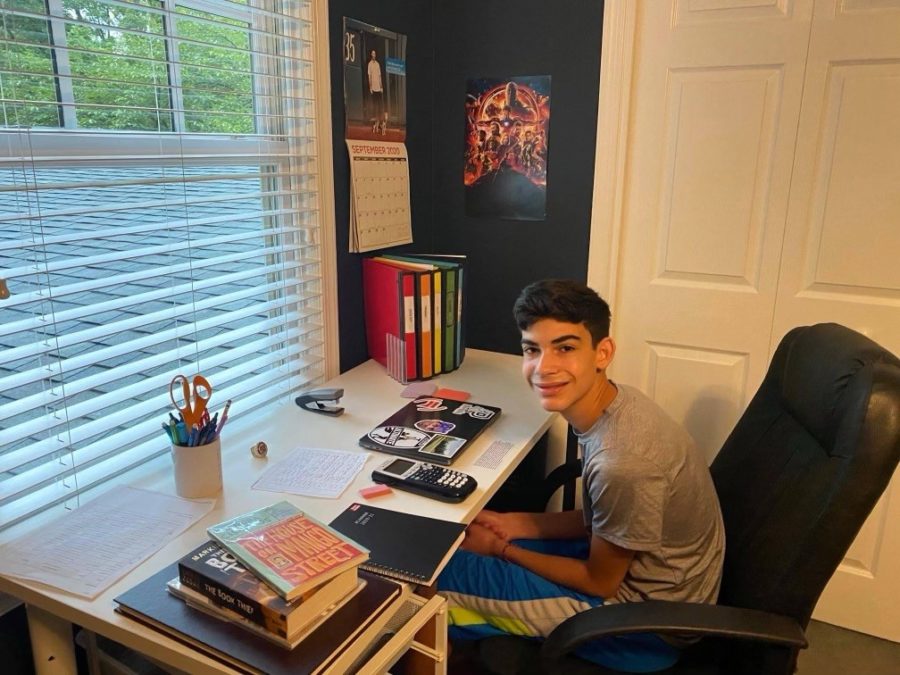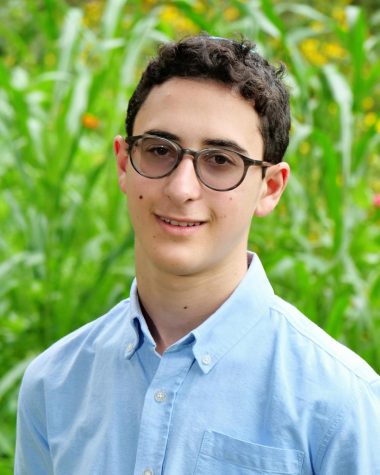How foreign and local transfers adapted freshman year
After returning to Maryland from Philadelphia, Freshman Oren Israel attended Milton Jewish Day School and then, switched to JDS for freshman year.
April 16, 2021
The jump from middle to high school is often a hard and stressful one. Beginning school virtually during a pandemic only made this transition harder, especially for someone who just moved to Maryland from almost 5,000 miles away.
Freshman David Skrynnikov moved in August from St. Petersburg, Russia to Wheaton-Glenmont, Maryland. While the cultural differences between the two countries are extensive, Skrynnikov said that some of the biggest differences between school in Russia and school at CESJDS had to do with academics.
“It’s very different, [in Russia] they have different subjects, and the school building looks absolutely different,” Skyrnnikov said.
Skrynnikov said that JDS helped him transition to school by introducing him to some teachers before the year began. Now, he would advise future foreign transfers to connect with locals to work on their English skills. Because Skrynnikov practiced his English leading up to the school year, the language barrier was not the hardest challenge of the switch for him.
“I think that the hardest part for me was to get my visa,” Skrynnikov said. “And the next hardest part has been the language.”
Skrynnikov is not the only new freshman at JDS hailing from a foreign country. There are nine others, all coming from Israel. For example, freshman Nofar Granit moved to the United States from a moshav, an Israeli town of farmers similar to a kibbutz, except with individual property, near Ashdod.
Granit has never switched schools before and therefore did not have any prior experiences to compare with this year’s switch. However, Granit said that it has been smooth sailing for her, in large part due to her teachers being incredibly helpful and understanding.
The freshman class also has 10 local transfers. One of the ten, freshman Rena Katz, switched from Melvin J. Berman Hebrew Academy, which she had attended since kindergarten. Katz recently decided to join the Track and Field Team and has enjoyed that tremendously. This experience has helped her meet new people, which has, in turn, benefited her both socially and academically.
Like Katz, freshman Oren Israel is technically listed as a local transfer, but the reality is slightly more complicated. Israel moved from Washington, D.C. to Philadelphia after first grade, and moved back to the area last year, attending the Milton Gottesman Jewish Day School. With an additional switch to start middle school, that makes this his fourth switch since kindergarten.
Israel said that the academic and social adjustments have been very different in his experience.
“Socially, it’s harder because–especially on Zoom–there aren’t really many opportunities to talk to people about stuff that doesn’t relate to school,” Israel said.
Israel said that academically, however, the transition has been smooth because teachers have eased their classes to accommodate the unprecedented hybrid model. Israel believes that when schools can reopen fully, he will be hit with the academic challenges of high school that he was expecting this year. He also said that the switch to high school has been harder socially for some of his former classmates than it has been for him.
“I feel like some of my friends who are adjusting to a public school over COVID, it’s much harder for them than it is for me because I already knew a bunch of people from [Milton] that came here, and from Camp [Ramah],” Israel said.
Jewish Text teacher Rabbi Reuvane Slater agreed that he has noticed a pattern that new students from the extended JDS community who already know some returning students tend to have an easier social transition.
Rabbi Slater also said that he tries to reach out to new students and families to try and help make the transition a smooth one. The welcoming atmosphere from both faculty like Rabbi Slater and returning students has clearly made the transition for these new students much easier. Rabbi Slater has likewise noticed this and pointed out that there is something special about the JDS community that relieves much of his responsibility to aid new students as a teacher.
“I really feel that the kids that I come across in school are very willing to help, and are very open to embrace somebody who is new,” Slater said.








